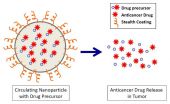Accurate blood pressure measurement fundamental to early diagnosis in pregnancy
2015-04-02
(Press-News.org) Accurate blood pressure measurement (BP) is fundamental to the early diagnosis of hypertensive disorders in pregnancy, says a review published 1 April, 2015, in The Obstetrician & Gynaecologist (TOG).
The diagnosis and management of hypertensive disorders in pregnancy, as well as obstetric haemorrhage, sepsis and safe abortion, are guided in part by the measurement of BP. These conditions contribute to more than half of all maternal deaths globally, so the accuracy of BP measurement is vital, the review concludes.
The review explains that BP monitoring is the most important and frequent screening test in the antenatal period and should be undertaken by healthcare assistants, midwives, general practitioners and obstetricians on all women regularly. It identifies a range of factors that currently lead to inaccuracies in BP measurement, including poor technique and lack of training, and points out that certain methods may underestimate BP in pre-eclampsia.
Ninety-nine percent of maternal deaths occur in low and middle income countries, where contributing factors include a lack of access to cheap, easy to use BP devices; a greater risk of maternal and perinatal mortality and morbidity secondary to pre-eclampsia and shock; and substandard care leading to a large proportion of maternal deaths, often as a result of poor recognition of hypertension and need for treatment.
In addition, the accuracy of BP measurement impacts on maternal and perinatal clinical outcomes, as highlighted in the 2006-2008 UK Confidential Enquiries Into Maternal Deaths report.1 The report found that the most common reason for substandard care in deaths secondary to pre-eclampsia/eclampsia was failure to recognise and treat hypertension. The same report3 also showed that the majority of maternal deaths could have been avoided if early warning signs of impending collapse were recognised and acted on more promptly, including as a result of accurate BP measurement.
BP is also vital in the detection of haemodynamic compromise, i.e. anything that may prevent proper blood flow, such as a hemorrhage, and the management of shock in pregnancy. Obstetric haemorrhage, pregnancy-related sepsis and unsafe termination of pregnancy are major contributors to approximately 46% of maternal deaths worldwide and can all present with signs and symptoms of shock.2
This review sets out a number of ways in which healthcare professionals can ensure that the BP measurements they make are more accurate. It highlights the current limited evidence regarding the use of vital signs in the diagnosis and management of maternal shock. It calls for more well-designed clinical studies and trials into interventions for women with hypertension in pregnancy. It says that research must also focus on determining the optimal vital sign predictor(s) and the thresholds of this predictor to guide assessment in obstetric shock.
Andrew H Shennan, Professor of Obstetrics at the Women's Health Academic Centre in London and co-author of the review says:
"There are several things clinicians can do to increase the accuracy of their BP measurement, such as becoming more aware of the advantages and disadvantages of the various available devices; having the confidence to raise concerns regarding any devices that are inaccurate for use in pregnancy; and correcting any poor techniques they've observed."
Jason Waugh, TOG Editor-In-Chief adds:
"As this review shows, the ability to measure blood pressure accurately is an indispensable skill for obstetricians, midwives and other healthcare workers, regardless of setting, in order to prevent maternal and perinatal morbidity and mortality, both in the UK and worldwide. This review is helpful in enabling clinicians to do everything they can to ensure that their BP measurement is accurate."
INFORMATION:
ELSE PRESS RELEASES FROM THIS DATE:
2015-04-02
BATON ROUGE - LSU Psychology Professor Megan H. Papesh was part of a research team whose study appeared in the online-first edition of the Journal of Neuroscience on Wednesday, April 1.
The research, jointly conducted by scientists from the Barrow Neurological Institute and Arizona State University, involves recording single-neuron activity in the brains of epilepsy patients who require electrodes implanted to monitor seizures. With the electrodes in place, processes such as perception and memory can be studied at the level of individual neurons.
The research focused ...
2015-04-02
As man-made threats to coral reefs mount and interest in conserving reef ecosystems grows, scientists have turned to studying extremely remote and uninhabited reefs in an effort to understand what coral reefs would be like in the absence of humans. A number of islands and atolls in the Pacific Ocean remain virtually untouched by human influence, situated hundreds of kilometers from the nearest human populations.
A study published today by scientists at the University of Hawai'i at Mānoa (UHM) School of Ocean and Earth Science and Technology (SOEST), the National ...
2015-04-02
MADISON, Wis. - Clearing grasslands to make way for biofuels may seem counterproductive, but University of Wisconsin-Madison researchers show in a study today (April 2, 2015) that crops, including the corn and soy commonly used for biofuels, expanded onto 7 million acres of new land in the U.S. over a recent four-year period, replacing millions of acres of grasslands.
The study -- from UW-Madison graduate student Tyler Lark, geography Professor Holly Gibbs, and postdoctoral researcher Meghan Salmon -- is published in the journal Environmental Research Letters and addresses ...
2015-04-02
Use of a class of insecticides, called neonicotinoids, increased dramatically in the mid-2000s and was driven almost entirely by the use of corn and soybean seeds treated with the pesticides, according to researchers at Penn State.
"Previous studies suggested that the percentage of corn acres treated with insecticides decreased during the 2000s, but once we took seed treatments into account we found the opposite pattern," said Margaret Douglas, graduate student in entomology. "Our results show that application of neonicotinoids to seed of corn and soybeans has driven ...
2015-04-02
Delving into the world of the extremely small, researchers are exploring how biodegradable nanoparticles can precisely deliver anticancer drugs to attack neuroblastoma, an often-deadly children's cancer.
By bringing together experts in pediatric oncology with experts in nanotechnology, researchers at The Children's Hospital of Philadelphia aim to thread the needle of delivering effective doses of cancer-killing agents while avoiding toxicity in healthy tissues. The team's new research shows that this approach inhibits tumor growth and markedly prolongs survival in animal ...
2015-04-02
DENVER - Exercise and physical activity should be considered as therapeutic options for lung cancer as they have been shown to reduce symptoms, increase exercise tolerance, improve quality of life, and potentially reduce length of hospital stay and complications following surgery for lung cancer.
Lung cancer is the leading cause of cancer deaths in the United States with an estimated 160,000 deaths each year and worldwide there are 1.4 million deaths. In the last two decades lung cancer therapy has improved, but the overall 5-year survival rate is still quite low at 17%. ...
2015-04-02
A particular molecular pathway permits stem cells in pediatric bone cancers to grow rapidly and aggressively, according to researchers at NYU Langone Medical Center and its Laura and Isaac Perlmutter Cancer Center.
In normal cell growth, the Hippo pathway, which controls organ size in animals, works as a dam, regulating cell proliferation. What the researchers found is that the transcription factor of a DNA binding protein called sex determining region Y box 2, or Sox2 for short, which normally maintains cell self-renewal, actually releases the floodgates in the Hippo ...
2015-04-02
ARLINGTON HEIGHTS, Ill. (April 2, 2015) - No home is perfect, but dysfunction in the home is now revealed to be especially dangerous for children at risk for asthma. A new study shows that children exposed to just one adverse childhood experience (ACE) had a 28 percent increased chance of developing asthma than those with no ACEs.
The study, published in the Annals of Allergy, Asthma and Immunology, the scientific publication of the American College of Allergy, Asthma and Immunology (ACAAI), used data from the National Survey of Children's Health. The survey drew from ...
2015-04-02
Globally, residential development is a leading driver of natural resource consumption, native species decline and fossil fuel emissions.
Today, residential development covers one out of every four acres of the land in the United States, and is predicted to more than double by 2100.
In many communities, local governments and planners are adopting sustainable development practices to address residential development impacts on human well-being and the environment. These sustainable development practices include considerations of a healthy environment, a robust economy, ...
2015-04-02
COLUMBIA, Mo. - Unlike some conditions, heart failure must be managed by patients taking prescriptions for the rest of their lives. Individuals who do not take their heart medication as prescribed have increased risks of mortality and hospitalization and higher health care costs. Numerous interventions have been designed to increase patients' adherence to medications; yet, no research has determined what intervention techniques are most effective. Now, a University of Missouri researcher found that interventions to encourage patients to take their medications as prescribed ...
LAST 30 PRESS RELEASES:
[Press-News.org] Accurate blood pressure measurement fundamental to early diagnosis in pregnancy



